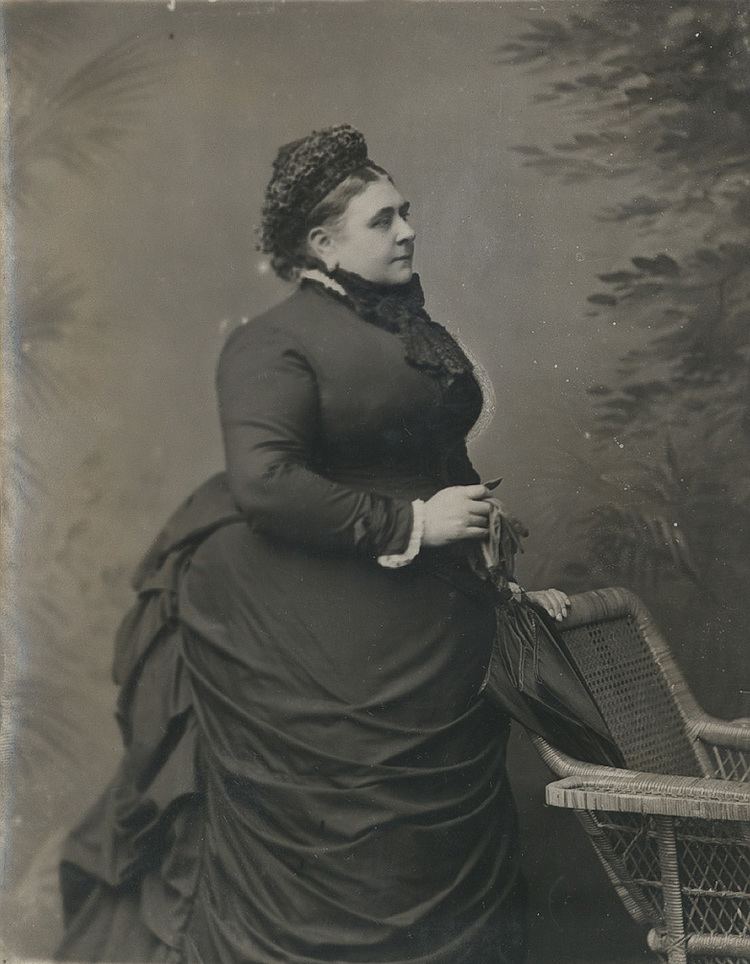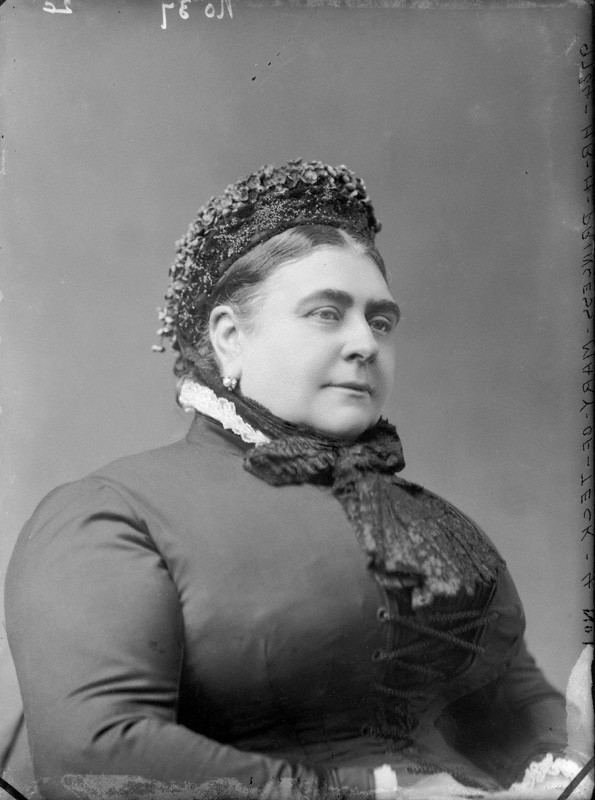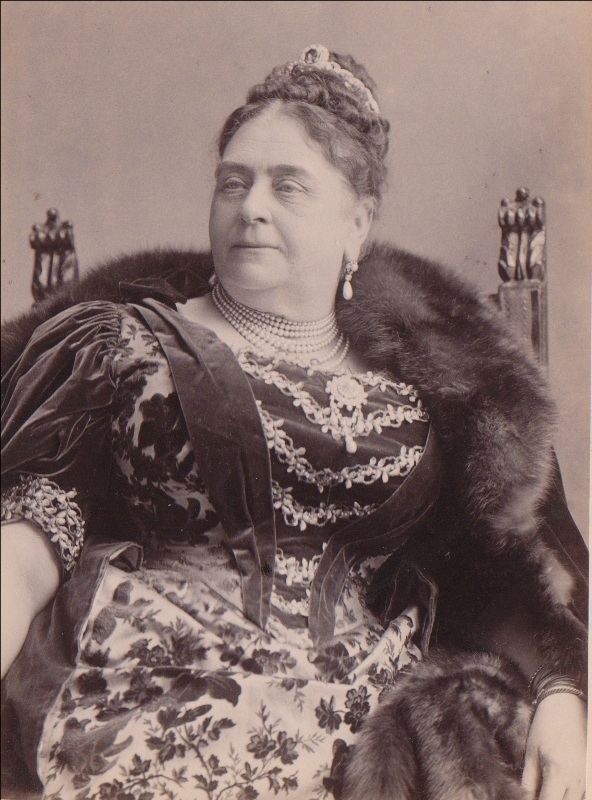Name Princess Adelaide | ||
 | ||
Issue Mary, Queen of the United KingdomAdolphus Cambridge, 1st Marquess of CambridgePrince Francis of TeckAlexander Cambridge, 1st Earl of Athlone Mother Princess Augusta of Hesse-Cassel Siblings Princess Augusta of Cambridge Similar People Mary of Teck, Francis - Duke of Teck, Mary - Princess Royal an, Prince Adolphus - Duke of C, Princess Augusta of Hesse‑Kassel | ||
Princess Mary Adelaide of Cambridge (Mary Adelaide Wilhelmina Elizabeth; 27 November 1833 – 27 October 1897) was a member of the British royal family, a granddaughter of George III, grandmother of Edward VIII and George VI and great-grandmother of Elizabeth II. She held the title of Duchess of Teck through marriage.
Contents

Mary Adelaide is remembered as the mother of Queen Mary, the wife of King George V. She was one of the first royals to patronise a wide range of charities.

Early life

Mary Adelaide was born on 27 November 1833 in Hanover, Germany. Her father was Prince Adolphus, Duke of Cambridge, the youngest surviving son of George III and Charlotte of Mecklenburg-Strelitz. Her mother was Princess Augusta of Hesse-Cassel, the daughter of Prince Frederick of Hesse-Cassel.

The young princess was christened on 9 January 1834 at Cambridge House, Hanover by Rev John Ryle Wood, Chaplain to the Duke of Cambridge. Her godmother and paternal aunt Princess Elizabeth was the only godparent who was present. The rest (who were absent, possibly represented by proxies) were King William IV and Queen Adelaide (her paternal uncle and aunt), Princess Mary (her paternal aunt), Princess Marie of Hesse-Cassel (her maternal aunt) and Princess Marie Louise Charlotte of Hesse-Kassel (her first cousin). She was named Mary Adelaide Wilhelmina Elizabeth for her aunts and uncle.

Mary Adelaide spent the early years of her life in Hanover, Germany, where her father acted as viceroy, in place of her uncles George IV and later William IV.

After the death of William IV, Mary Adelaide's first cousin, Princess Victoria of Kent ascended the throne in 1837. However, Salic law prevented Victoria from ascending the throne of Hanover, which instead passed to Prince Ernest Augustus, Duke of Cumberland. Thus, the personal union which had existed for over a century between Britain and Hanover came to an end along with the arrangement of Hanover's ruler living in England as the British monarch and using a viceroy to represent him in Hanover. The Duke of Cumberland moved to Hanover as King and Mary Adelaide's father, no longer needed in Hanover, returned to London with his family, setting up residence in Kensington Palace.
Marriage
By the age of 30, Mary Adelaide was still unmarried. Her large girth (earning her the disparaging epithet of "Fat Mary") and lack of income were contributing factors, as was her advanced age. However, her royal rank prevented her from marrying someone not of royal blood. Her cousin, Queen Victoria, took pity on her and attempted to arrange pairings.
Eventually a suitable candidate was found in Württemberg, Prince Francis of Teck. The Prince was of lower rank than Mary Adelaide, was the product of a morganatic marriage and had no succession rights to the throne of Württemberg, but was at least of princely title and of royal blood. With no other options available, Mary Adelaide decided to marry him. The couple were married on 12 June 1866 at St. Anne's Church, Kew, Surrey.
The Duke and Duchess of Teck chose to reside in London rather than abroad, mainly because Mary Adelaide received £5,000 per annum as a Parliamentary annuity and carried out royal duties. Her mother, the Duchess of Cambridge, also provided her with supplementary income. Requests to Queen Victoria for extra funds were generally refused; however, the queen did provide the Tecks with apartments at Kensington Palace and White Lodge in Richmond Park as a country house.
Mary Adelaide requested that her new husband be granted the style Royal Highness, but this was refused by Queen Victoria. The queen did, however, promote Francis to the rank of Highness in 1887 in celebration of her Golden Jubilee.
Issue
The Tecks had one daughter and three sons:
Life abroad
Despite their modest income, Mary Adelaide had expensive tastes and lived an extravagant life of parties, expensive food and clothes and holidays abroad. The debts soon built up and the Tecks were forced to flee the country in 1883 to avoid their creditors. They travelled to Florence, Italy, and also stayed with relatives in Germany and Austria. Initially, they travelled under the names of the Count and Countess von Hohenstein. However, Mary Adelaide wished to travel in more style and reverted to her royal style, which commanded significantly more attention and better service.
Later life and death
The Tecks returned from their self-imposed exile in 1885 and continued to live at Kensington Palace and White Lodge in Richmond Park. Mary Adelaide began devoting her life to charity, serving as patron to Barnardo's and other children's charities.
In 1891, Mary Adelaide was keen for her daughter, Princess Victoria Mary of Teck (known as "May") to marry one of the sons of the Prince of Wales, the future Edward VII. At the same time, Queen Victoria wanted a British-born bride for the future king, though of course one of royal rank and ancestry, and Mary Adelaide's daughter fulfilled the rank criteria. After Queen Victoria's approval, May became engaged to Prince Albert Victor, Duke of Clarence and Avondale, second in line to the British throne. He died suddenly six weeks later. Queen Victoria was fond of Princess Mary and persuaded the Duke of Clarence's brother and next in the line of succession, Prince George, Duke of York, to marry her instead. They married in the Chapel Royal, St. James's Palace, on 6 July 1893.
Mary Adelaide never saw her daughter crowned queen, as she died on 27 October 1897 at White Lodge, following an emergency operation. She was buried in the royal vault at St. George's Chapel, Windsor.
Titles and styles
As a male-line granddaughter of the British monarch, she was styled Her Royal Highness Princess Mary Adelaide of Cambridge. As the male-line granddaughter of a king of Hanover, Princess Mary Adelaide also bore the titles of Princess of Hanover and Duchess of Brunswick-Lüneburg.
